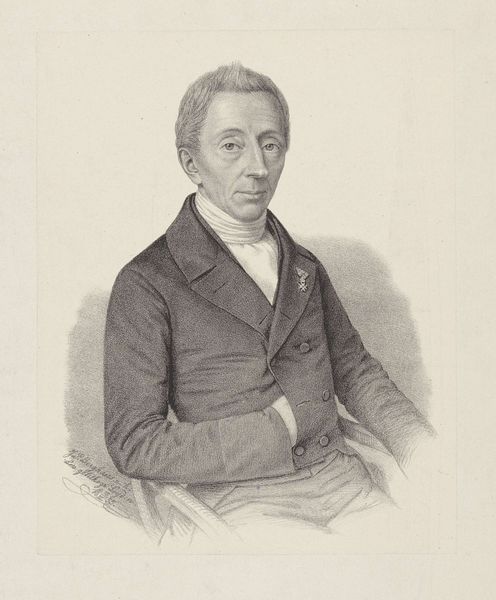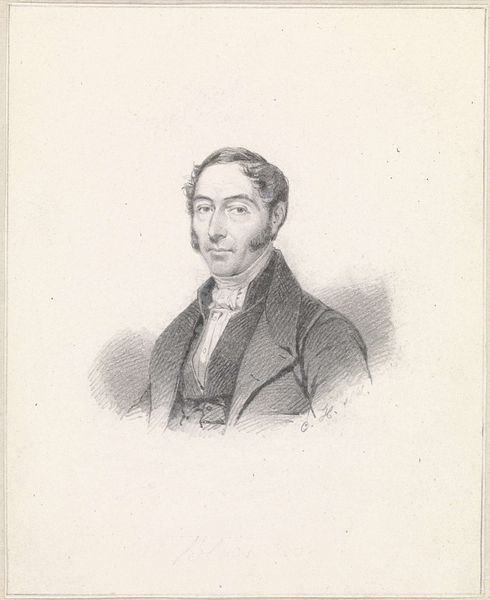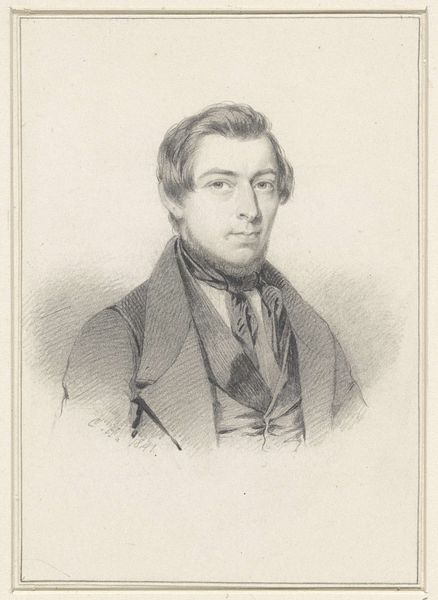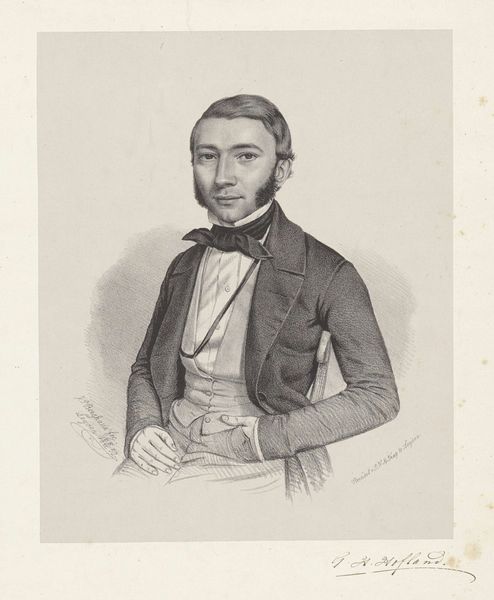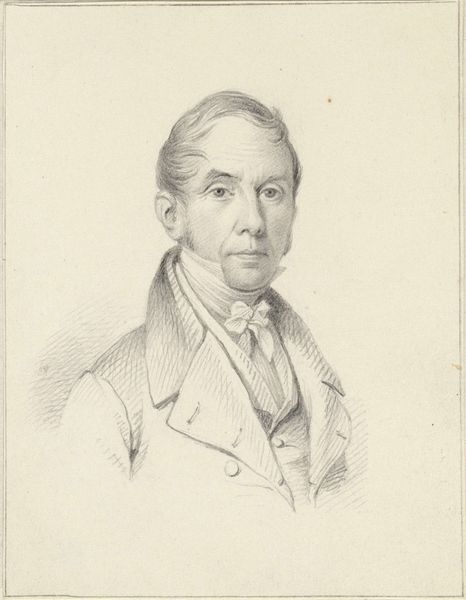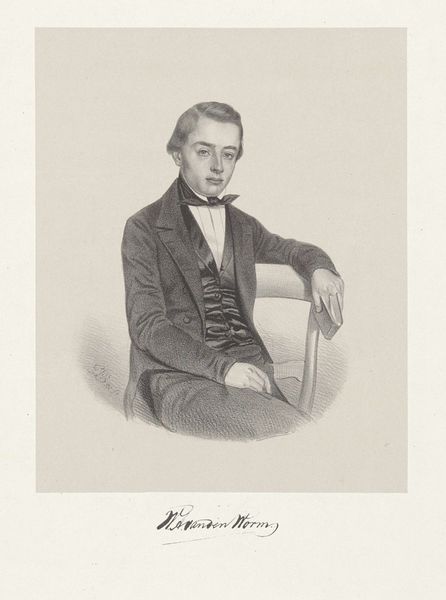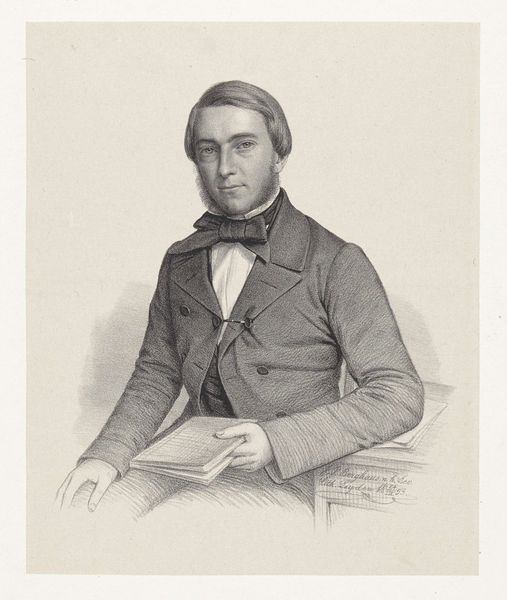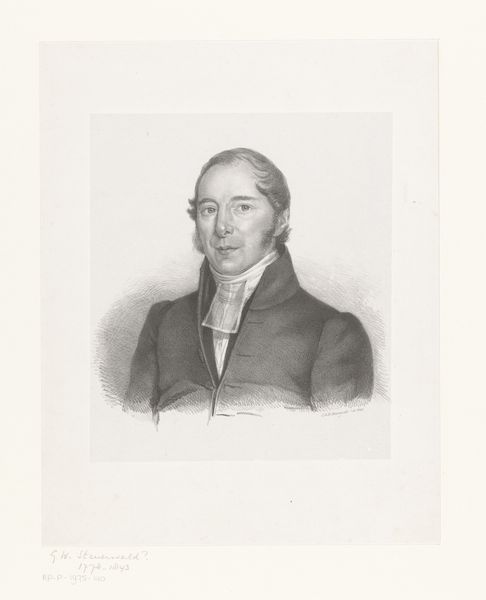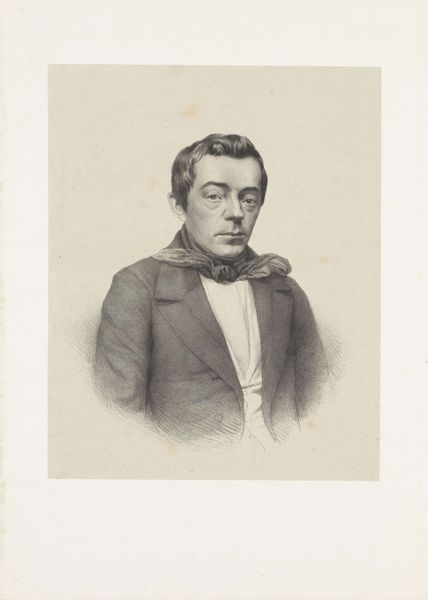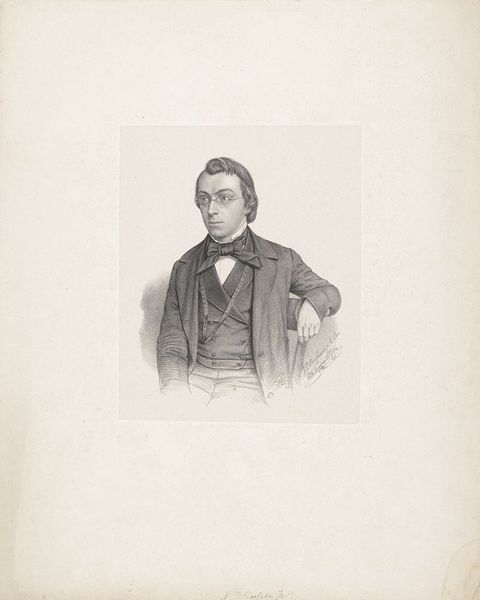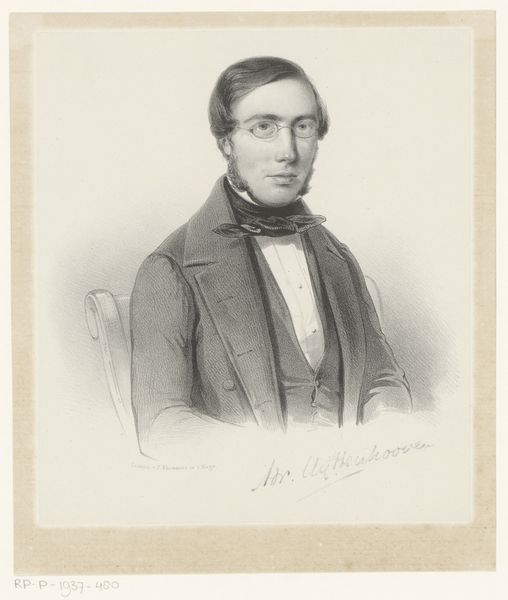
drawing, paper, pencil
#
portrait
#
drawing
#
paper
#
historical photography
#
pencil
#
academic-art
#
realism
Dimensions: height 335 mm, width 256 mm
Copyright: Rijks Museum: Open Domain
This is a lithograph of Jan Wouter Felix, made by Johann Peter Berghaus, around the mid-19th century. Lithography is a printmaking process that relies on the simple principle that oil and water don't mix. The artist draws an image on a flat stone or metal plate with a greasy crayon, then treats the surface so that ink will adhere only to the drawn areas. The printmaker then dampens the surface with water, applies ink, and presses the image onto paper. The subtle gradations of tone in this portrait, achieved through careful shading and hatching, speak to Berghaus's mastery of the technique. The fine lines of the lithograph capture the texture of Felix's clothing and the details of his face. The lithographic process allowed for relatively quick and inexpensive reproduction, making images like this accessible to a wider audience and contributing to the rise of visual culture during the 19th century. Lithography blurs the line between art and industry, and reminds us to consider the social and economic context in which art is produced and consumed.
Comments
No comments
Be the first to comment and join the conversation on the ultimate creative platform.

